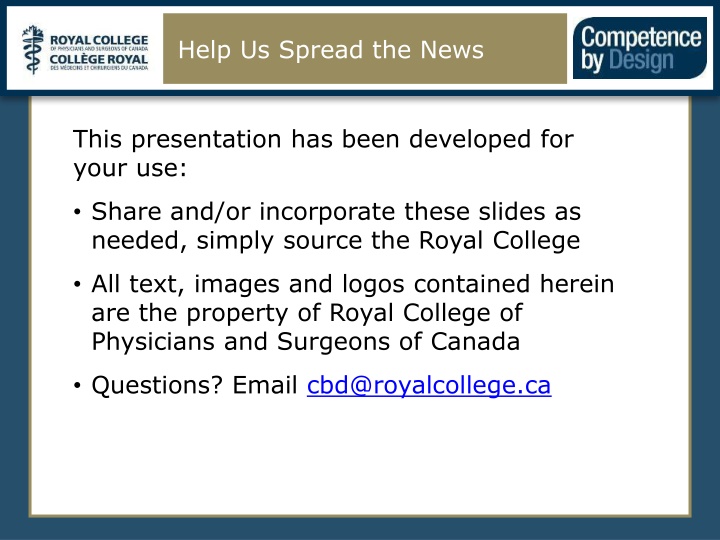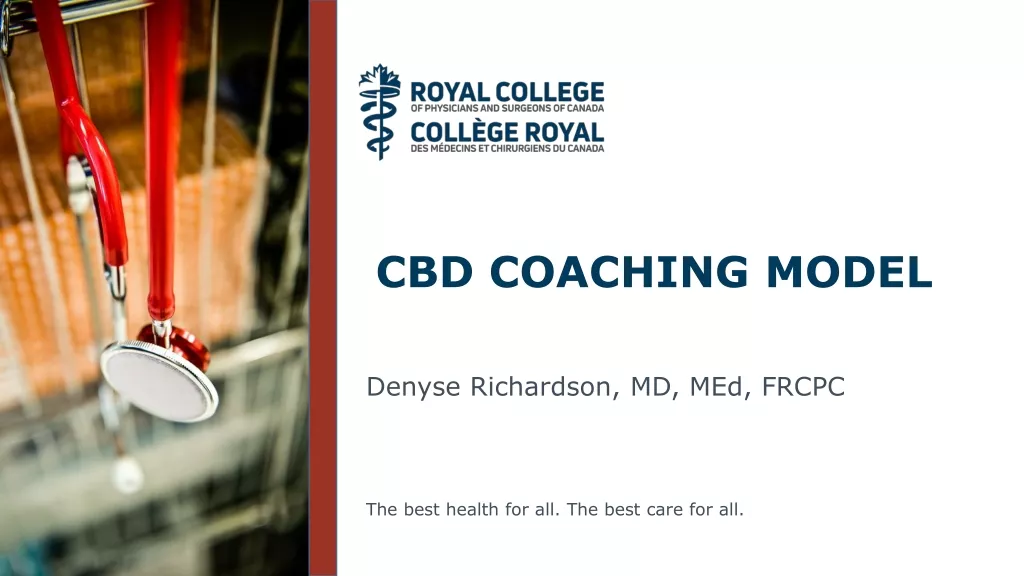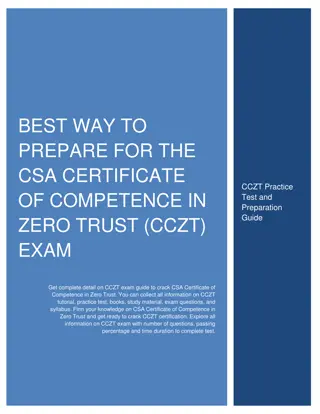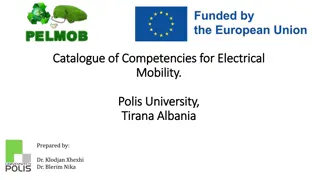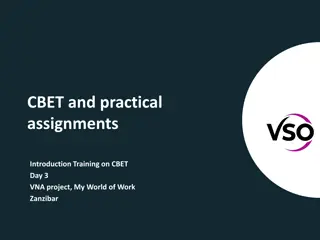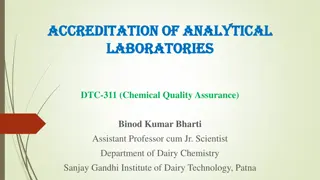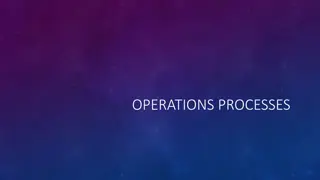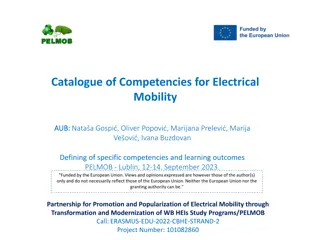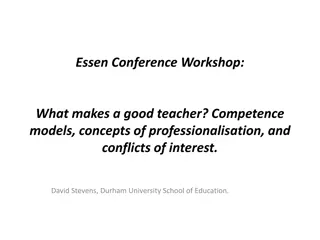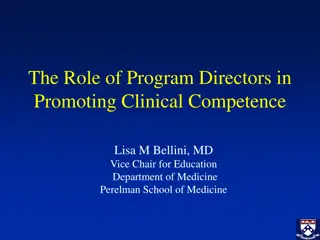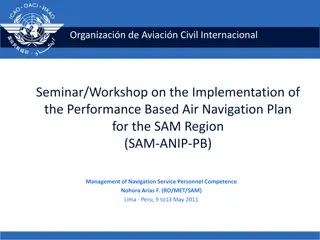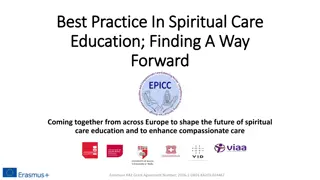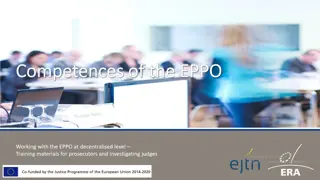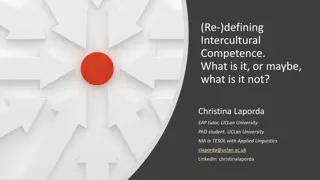Transforming Medical Education: Competence by Design and CanMEDS Framework
Competence by Design (CBD) is a multi-year initiative revolutionizing medical education through competency-based models like CanMEDS 2015. This presentation explores the integration of milestones, EPAs, and the Competence Continuum in CBD implementation, emphasizing specialty-specific training stages and themes like patient safety. Disciplines adopting CBD align with CanMEDS Framework to advance training quality and assessment practices.
Download Presentation

Please find below an Image/Link to download the presentation.
The content on the website is provided AS IS for your information and personal use only. It may not be sold, licensed, or shared on other websites without obtaining consent from the author.If you encounter any issues during the download, it is possible that the publisher has removed the file from their server.
You are allowed to download the files provided on this website for personal or commercial use, subject to the condition that they are used lawfully. All files are the property of their respective owners.
The content on the website is provided AS IS for your information and personal use only. It may not be sold, licensed, or shared on other websites without obtaining consent from the author.
E N D
Presentation Transcript
Help Us Spread the News This presentation has been developed for your use: Share and/or incorporate these slides as needed, simply source the Royal College All text, images and logos contained herein are the property of Royal College of Physicians and Surgeons of Canada Questions? Email cbd@royalcollege.ca
Milestones and Entrustable Professional Activities (EPAs) Click to edit Master subtitle style
What is CBD? How Does CanMEDS 2015 Fit? Competence by Design (CBD) is Multi-year, transformational change initiative aimed at introducing a competency-based medical education (CBME) model to specialty education; CanMEDS 2015 - the foundational project of CBD, which revitalized the 10 year old framework. More emphasis on overall coherence with simpler, More direct, language, Integration of Patient Safety, Physician Wellness, eHealth and Handover concepts, and Introducing generic milestones (meaningful markers of progression) along the continuum within each Role. 3
CanMEDS 2015: Milestones and EPAs Using the updated CanMEDS Framework and the Milestones as a guide, disciplines adopting CBD are working to: Separate their specialty into stages of training; Integrate new themes like patient safety and handovers into their programs; and Develop specialty-specific milestones and Entrustable Professional Activities (EPAs) for each stage of training. 5
Example: EPA Foundations of Discipline Assessing uncomplicated patients with a new diagnosis of cancer Milestones Medical Expert 1.3 Apply a broad base and depth of knowledge 2.1 Ascertain/ address patient s understanding 2.2 Select and interpret appropriate diagnostic tests 2.2 Assess patient s status and assign ECOG or PS Communicator 2.1.1 Use patient-centred interviewing skills 5.2 Communicate using written health records, EMRs etc Collaborator 3.2.2. Communicate with patient s primary care provider 6
Milestones and EPAs at each stage of progression Milestone - A defined, observable marker of an individual's ability along a developmental continuum Used for planning and teaching Based on CanMEDS Roles Entrustable Professional Activity (EPA) An essential task of a "discipline" that an individual can be trusted to perform independently in a given context Used for assessment Encompasses multiple milestones
Milestones and EPAs cont The key difference between EPAs and milestones is that EPAs are the tasks or activities that must be accomplished, whereas milestones are the abilities of the individual.
Key Concept of EPAs: Entrustment What can I safely delegate with indirect supervision? 9
Milestones and EPAs within Each Stage of Training Assessment for learning Provide clear learning and teaching paths Remove need to teach or evaluate everything at once focused on discrete clinical tasks Allow for regular, meaningful feedback, tracking and coaching Generate practical and demonstrable evaluation data 10
Benefits of Milestones and EPAs Link clinical activities with learning and assessment, Clearly defined targets for acquiring competency and meeting standards throughout training, Better preparation to serve patients and communities, and Strive towards mastery of skills and abilities beyond training and throughout practice. 11
As a Teacher Focus on specific clinical activities with residents at different stages, Focus on teaching towards specific milestones within a stage, and Conduct assessments of specific EPAs.
Milestones and EPAs EPAs for Assessment Meaningful, measurable markers of progression of competence Milestones for teaching Abilities expected of a resident at a defined stage of training
Teaching and Assessing with Milestones and EPAs Educators will use milestones to design educational activities and teach specific abilities. Once the skills/attitudes required to meet the milestones have been taught, educators can assess achievement using an EPA. If the EPA is successfully performed, then all the skills which make up the various milestones within the EPA have been learned and competence has been demonstrated.
Unpack Milestones If a trainee is struggling with an EPA, the teacher can break the EPA down into its component abilities (milestones) to help determine where further guidance or teaching is needed.
A Balanced View of Performance The combination of milestones and EPAs will allow educators to examine performance at both the micro (when needed) and macro levels providing a truly balanced view of a trainee s abilities. 16
CanMEDS and CBD Resources Visit us at www.royalcollege.ca/cbd/resources/ CanMEDS: Introduction for Clinical Teachers Video Series 17
Your Input Matters Share your input with the Royal College via: cbd@royalcollege.ca www.facebook.com/TheRoyalCollege https://twitter.com/Royal_College www.linkedin.com For more information, visit www.royalcollege.ca/cbd www.royalcollege.ca/cbd/resources 18
Images Slide 4 and 10 : Competence Continuum, Royal College of Physicians and Surgeons of Canada Slide 7 : EPAs and Milestones, Royal College of Physicians and Surgeons of Canada Slide 9 : R sident Slide 13 : http://www.child-development-guidance.com/stages- of-child-development.html Slide 13 : Public domain image http://tse3.mm.bing.net/th?id=OIP.J2UqHBwajPLjkOWgp2WXX AEsDh&w=205&h=154&c=7&qlt=90&o=4&dpr=1.25&pid=1.7 Slide 17 : Royal College of Physicians and Surgeons of Canada
